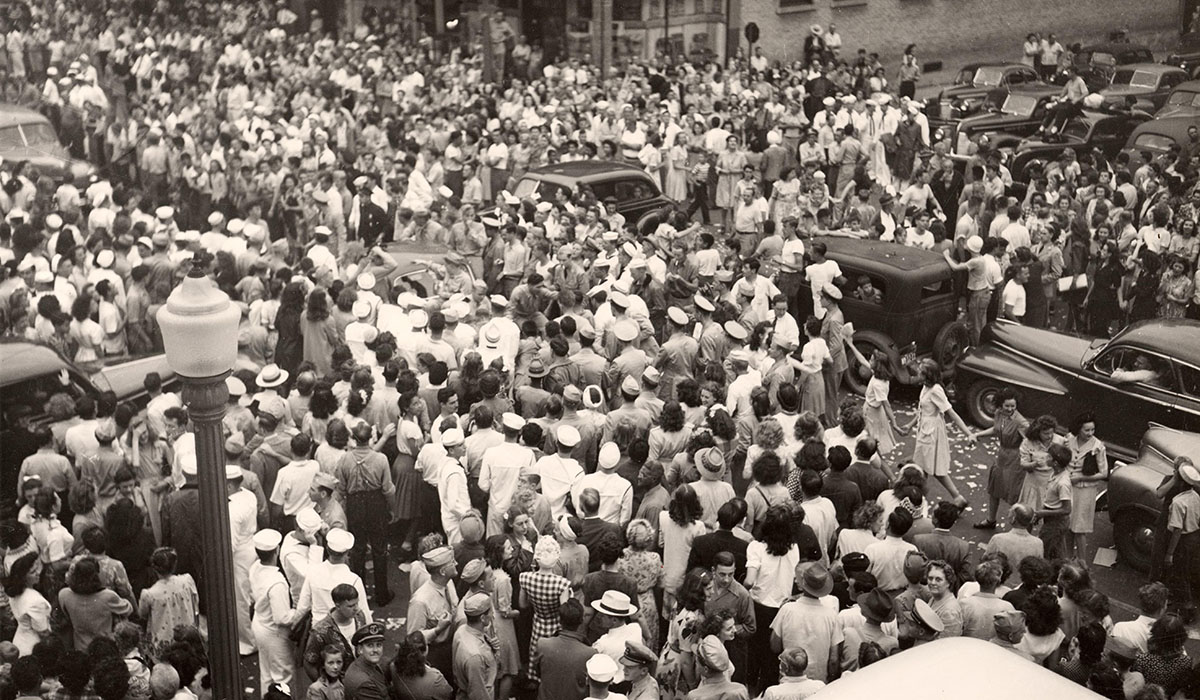Students congregated on the Michigan Daily offices around 7:05 p.m. on Tuesday, Aug. 14, 1945. The extra evening edition of the paper proclaimed the news across the top: “Peace! Tokyo Accepts Terms.” Amid the mass of further international details, a small part of the lower left corner of the front page gave the immediate local reaction:
“University activity will be suspended tomorrow (Wednesday) and classes will resume Thursday, University officials announced. Official University recognition of Japanese surrender will come at 7:30 a.m. EWT (Editor’s note: Eastern War Time) tomorrow when the powerhouse siren will sound a five-minute blast. In addition, a 21-round salute will be fired by the French 75 mm. artillery piece located in the Law Quadrangle. Emergency units of the University, such as the Hospital, will be open.”
Though the surrender wouldn’t be official until the documents were signed in Tokyo Bay on Sept. 2, Ann Arbor celebrants packed State Street and Main Street (pictured) on that Tuesday night. The joyous atmosphere lasted through the night.
“My younger brother can come back now,” said John Rucker, a veteran of the Italian theater of the war and first-year Law School student. “I’m happy for all mothers.”
Some, however, took the news solemnly. Franklin H. Littell, director of U-M’s Lane Hall (at that time a central meeting space for religious activities on campus), reflected:
“A nation which in war has made the greatest production record in history has yet to prove that it can use that potential for the good life as well as for destruction.”
Littell would go on to dedicate much of his life to researching and bringing to light the horrors of the Holocaust.
Gregory Lucas-Myers, ’10, is senior assistant editor of Michigan Alumnus.





